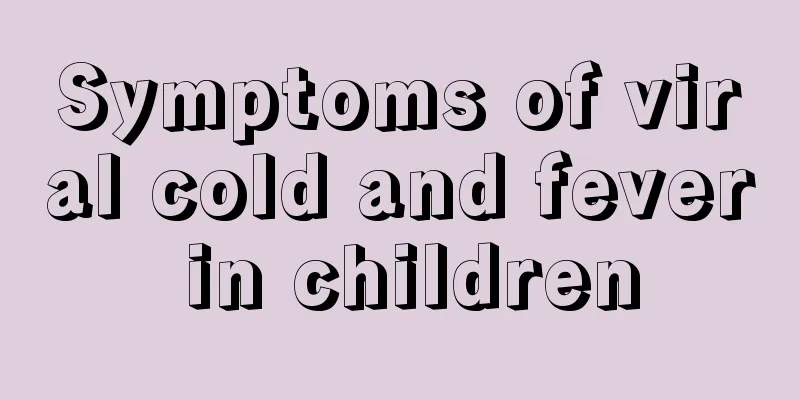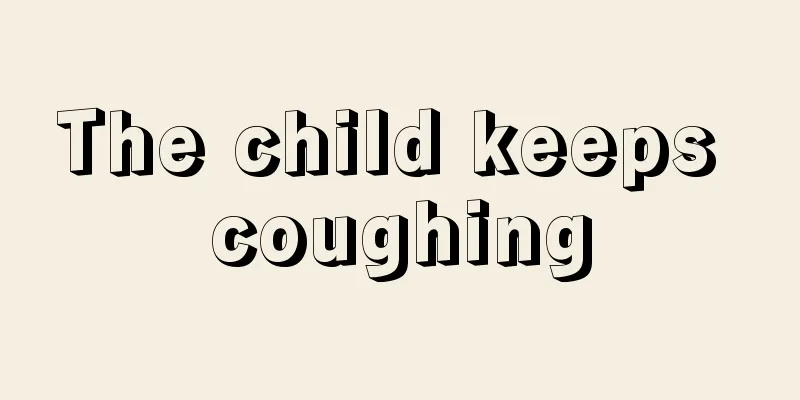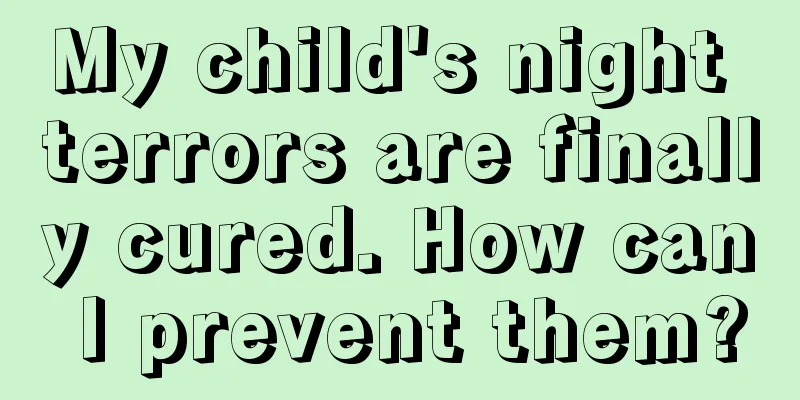Children with high white blood cell and lymphocyte counts

|
Children are the flowers of the motherland and the future of the motherland. Whether children grow up healthily is also related to their future. What is going on when children have high white blood cell and lymphocyte counts? What should we do? These are questions that puzzle many parents. From a medical point of view, high white blood cell and lymphocyte counts are a behavior of self-protection. When the human body is infected by bacteria and there is inflammation, the white blood cell and lymphocyte counts will increase. Their function is to kill bacteria and protect human health. The following is some knowledge in this area. 1. Upper respiratory tract infectionThe most common disease in life is upper respiratory tract infection, with symptoms including cough, fever, sneezing, runny nose, etc., commonly known as cold. More than 95% of upper respiratory tract infections are viral infections, which do not require antibiotic treatment. Antibiotics are not antipyretics. Just because a viral infection causes a high fever does not mean that antibiotics need to be used. If you have a cough, you can use cough medicine to reduce phlegm, but you don’t necessarily need antibiotics. The harm of misusing antibiotics: 1. Chronic diarrhea, developmental delay, asthma caused by allergies, etc. caused by intestinal flora imbalance; 2. The problem of bacterial resistance. The bacteria in the hospital are particularly resistant, and super bacteria are all in the hospital (so don’t rush to the hospital as soon as your child catches a cold. It’s originally a viral infection, and going to the hospital will make it easier to get infected with more powerful resistant bacteria) But how do you know whether you should use antibiotics? Check your blood and see the test results. The editor uses the blood test report of a certain urban hospital as an example to explain to everyone how to understand the various indicators. 2. First, look at the white blood cell count. Generally speaking, if the white blood cell count is greater than 10*10 to the power of 9, it indicates that the child has a bacterial infection and needs to use antibiotics. The greater the number of white blood cells, the more virulent the bacteria are or the greater the number of bacteria. White blood cells are commonly known as white blood cells and are also called immune cells. There are five types of white blood cells in the blood, divided from small to large in size: lymphocytes, alkaliphils, neutrophils, eosinophils and monocytes. But sometimes a particularly high white blood cell count does not necessarily mean a bacterial infection, as white blood cells also contain lymphocytes and neutrophils. If a child has infectious mononucleosis, the number of lymphocytes in his body will be particularly high, so the total white blood cell count will also be particularly high, possibly reaching 20 or even 30. In fact, most of them are lymphocytes, not neutrophils. This order shows: the white blood cell count is within the normal range and it is a viral infection. 3. Second, look at the percentage of neutrophils. The higher the value, the more the disease is still developing and may worsen further.Neutrophils mainly target bacteria. When a child's body is infected with bacteria, the number of neutrophils will increase to kill the bacteria. If the neutrophil percentage decreases, the lymphocyte percentage will increase accordingly, indicating that the child may have a viral infection. This form shows: the neutrophil percentage is decreased, the lymphocyte percentage is increased, and the child is infected with a virus. 4. Third, look at the absolute value of neutrophils. If it is lower than the normal value, it indicates a viral infection. The lower the absolute value of neutrophils, the more severe the viral infection. If it is higher than normal, it indicates a bacterial infection. The total white blood cell count in the body is not too high, but the absolute value of neutrophils is very high, indicating that the child's fever will become more and more severe. This form states: the child has a viral infection, low white blood cell count, low neutrophil count, and the fever has ended. 5. Fourth, look at the platelets. The higher the platelet count, the more times the child has been infected. My baby's platelet count is normal, but children with repeated infections will have higher platelet counts. 6. Fifth, look at the absolute values of eosinophils (EOS) and alkaliphils (BAS), which are one of the indicators to determine whether the child is allergic. From the table we can see that the absolute value of eosinophils is 0.16, and the normal value is 0.02 to 0.5, which is within the normal range.7. Sixth, look at the absolute value of lymphocytes and the percentage of lymphocytes. Lymphocytes mainly fight viruses by secreting antibodies. If these two values are higher than normal, it means that the child may have a viral infection. 8. Seventh, look at the percentage of monocytes and the absolute value of monocytes. Monocytes are phagocytes. Phagocytes have effects on both viruses and bacteria. Regardless of viral infection, bacterial infection or mycoplasma infection, phagocytes will be the first to appear. The higher the monocyte count, the more severe the child's fever is and the longer it lasts. From the table we can see that its normal value does not exceed 10. If the child's monocyte percentage exceeds 18, he will definitely have a high fever for more than 3 days before getting better, no matter what medicine he uses. |
<<: Three-month-old baby always shakes his head when sleeping
>>: What should I do if my child has a bump on the back of his head?
Recommend
How to wean a one and a half year old baby
When children are young, they can only rely on dr...
What foods are difficult for babies to digest?
Nowadays, there are more and more types of snacks...
What can children eat to grow taller?
We all know that everyone hopes to be tall, becau...
What should I do if my child eats mosquito coils?
Because children are very curious, many parents w...
Children's flower roll recipes
Nowadays, many children are picky eaters. Not onl...
At what age do children lose their teeth?
After a child is born, the baby teeth need to gro...
What causes a child to suddenly have a nosebleed?
Some young children suddenly experience nosebleed...
What to do if your child has blisters on his ankle
If blisters appear on the child's ankle, pare...
Educational methods for children's precocious puberty
When children are growing up, parents need to pay...
What are the reasons why babies wake up easily when sleeping?
The baby's growth cannot be separated from th...
The child has an abscess on his gums
Dental health has always been a concern for paren...
What should babies eat if they sweat a lot?
Children are in an excited state every day and pl...
What to do if your baby doesn't like to wash his hair
Babies are very easy to take care of when they ar...
Physical cooling of a child with a high fever of 39 degrees
I know a lot of mothers, and they always say that...
What are the good foods for children to take to supplement vitamins?
Children need a lot of nutrients during their gro...









